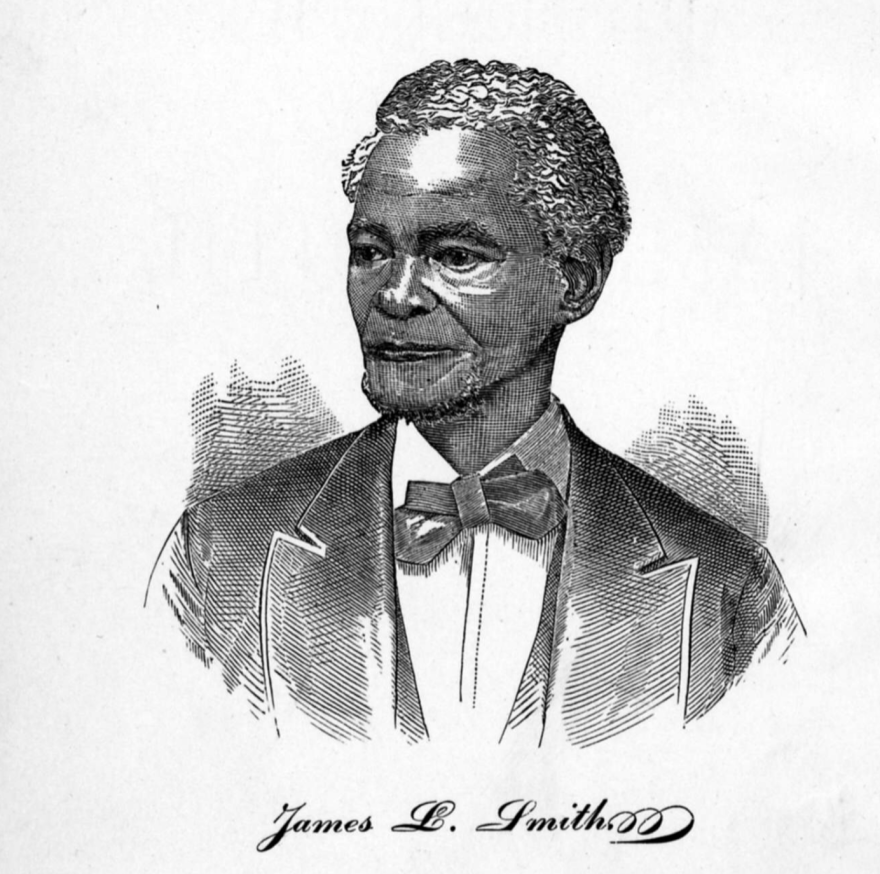184 years ago, James Lindsey Smith, a man enslaved in Virginia’s Northern Neck region on the Chesapeake Bay, made his way to freedom and eventually to Norwich, Connecticut. Inspired by that journey and Smith’s determination, a group of men from the Castle Hill Church in Norwich attempted to retrace his steps back.

History gets squishy when documents are scarce. Slave pens and whipping posts decay; ancient roads return to the forest. But before he died, James Lindsey Smith, born Lindsey Payne, wrote his autobiography, giving details of his life of enslavement along the Chesapeake Bay and his courageous escape.
Kathy Schuder and Charles Sydnor from the Northern Neck Historical Society helped the church group find what might be Smith’s first night on his path of escape.
“As an enslaved person, he led religious meetings," Schuder said. "He was a very popular shoe maker, very well-known and talented. He was a smart man.”
And Smith was lame from a childhood injury his enslaver had never properly treated.
“He was carrying timber early on in his youth, which messed up his leg," Sydnor said. "It was quite phenomenal that he should go on alone and be able to walk that distance.”
It begins at the local tavern in Heathsville, Virginia, which still operates as a historic landmark. Smith’s plans to escape with two friends became immediate when slave traders tried to capture one of them. They made their way to Mantua, an 18th-century plantation built by enslaved people on the Coan River, near the confluence of the Potomac River and the Chesapeake Bay.
Whedbee Mullen’s family bought Mantua in the 1960s. She grew up wandering the woods and fields here.
“The owner, James Smith, was a merchant," Mullen said. "All the brick is made by hand and the stone is ballast from his ships.”
She guided the group past what is likely the site of former slave quarters and into the woods, where the old road from the tavern to the Coan River once existed and was probably used on the night of the escape.
Along the way, two church members, Robenson Charlotin and Caleb Roseme, stopped to pick up pieces of brick.
“Handmade brick made by a slave — I mean, you gotta think about that," Roseme said. "This is a handmade brick made by a slave. To think that years later, we’d be holding it — I don’t think that they were thinking that years later, people would be coming and slavery would be a thing of the past.”
At last, they reached what could be the first step in a long journey to escape. Smith described sobbing at the shore as the three men boarded a canoe and left their families and friends. Pastor Adam Bowles marked the moment on May 6, exactly 184 years later.
“In the book it, in detail, it describes him getting to this point," Bowles said. "You can’t help but imagine what it must have been like. You can’t help but imagine all the emotions.”
As Charlotin, a Hatian immigrant, sings Sam Cooke’s “A Change is Gonna Come,” the group looks out to the water, imagining James Lindsey Smith and his friends. Their next stop across the river follows the runaways, who stole a sailboat and landed in Maryland, where they began the next leg of their journey to freedom. For Smith, it would end with a prosperous life in Norwich. Bowles said plans are underway to paint a mural of Smith on a wall of their church. Follow their progress on their Facebook page.
Copyright 2022 WSHU. To see more, visit WSHU. 9(MDExNDI3NjUzMDEzNjkzMTgzNTExNDFlYQ004))
